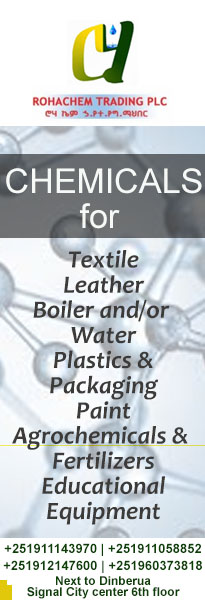
Mines Resource Development Bureau of the Amhara Regional State identified over 19,174 square kilometers of land for mineral development. According to the deputy head of the office, Mr. Tamrat Demse, a regional map has been prepared, which includes areas for mineral development in the region, containing industrial, construction, iron, and steel-related minerals.
The office carried out geological survey and mapping work in various districts, including Smada, Guangua, Ankober, Ambasel, Waghimra, Sekota, and Janamora, where it discovered minerals such as opal, quartz, ignimbrite, basalt, copper, nickel, sulphur, coal, mineral water, iron, sandstone, limestone, and ornamental minerals. The office also identified 13,057 square kilometers of land in the Awi Zone Inabara-Gomar district, which has gold, opal, granite, marble and other minerals. It is currently developing this area for investors and youth.
The office is currently verifying the laboratory results of the minerals found in all areas. It has started transferring the areas designated for mineral development to youth and investors.
According to the Office of the Head of the Regional State, there are 40 types of mineral resources scattered across different localities of the region. The areas that have been identified as having high mineral resources are witnessing promising developments.
In October last year, Bahir Dar, the Regional State’s Capital, hosted a forum on mobilization of mining and development which was focused on mineral resources and investment opportunities in the Regional State’s mining sector. During the forum’s opening, it was revealed that investors were eyeing the region for its potentials in gold, opal, Jasso stone, coal, and iron ore mining.
During the current fiscal year, the Regional State was able to sell 85.4 kg of gold to the National Bank. It also garnered USD 7.9 million from opal and gold minerals.
Source: Addis Zemen
Additional source: 2Merkato Archives
Ethiopia: Amhara Region Identifies 19,174 Square Kilometers of Land for Mineral Development
Mines Resource Development Bureau of the Amhara Regional State identified over 19,174 square kilometers of land for mineral development. According to the deputy head of the office, Mr. Tamrat Demse, a regional map has been prepared, which includes areas for mineral development in the region, containing industrial, construction, iron, and steel-related minerals.
The office carried out geological survey and mapping work in various districts, including Smada, Guangua, Ankober, Ambasel, Waghimra, Sekota, and Janamora, where it discovered minerals such as opal, quartz, ignimbrite, basalt, copper, nickel, sulphur, coal, mineral water, iron, sandstone, limestone, and ornamental minerals. The office also identified 13,057 square kilometers of land in the Awi Zone Inabara-Gomar district, which has gold, opal, granite, marble and other minerals. It is currently developing this area for investors and youth.
The office is currently verifying the laboratory results of the minerals found in all areas. It has started transferring the areas designated for mineral development to youth and investors.
According to the Office of the Head of the Regional State, there are 40 types of mineral resources scattered across different localities of the region. The areas that have been identified as having high mineral resources are witnessing promising developments.
In October last year, Bahir Dar, the Regional State’s Capital, hosted a forum on mobilization of mining and development which was focused on mineral resources and investment opportunities in the Regional State’s mining sector. During the forum’s opening, it was revealed that investors were eyeing the region for its potentials in gold, opal, Jasso stone, coal, and iron ore mining.
During the current fiscal year, the Regional State was able to sell 85.4 kg of gold to the National Bank. It also garnered USD 7.9 million from opal and gold minerals.
Source: Addis Zemen
Additional source: 2Merkato Archives



